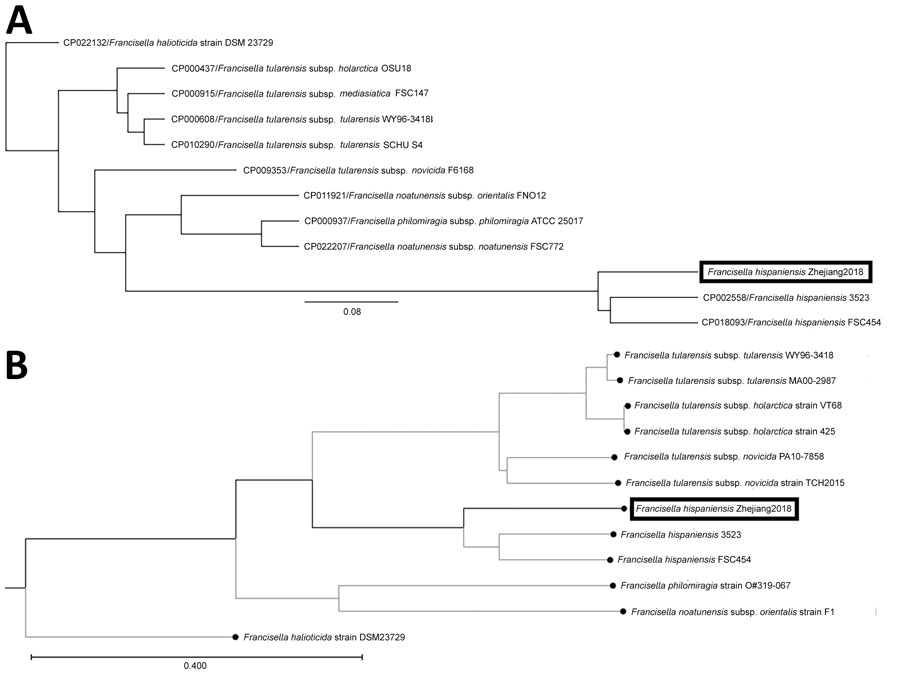Volume 26, Number 10—October 2020
Dispatch
Seawater-Associated Highly Pathogenic Francisella hispaniensis Infections Causing Multiple Organ Failure
Figure 2

Figure 2. Comparisons of Francisella hispaniensis isolate from a 64-year-old male fisherman, China (black boxes), and reference sequences. A) Single-nucleotide polymorphisms. Scale bar for indicates expected substitutions per nucleotide position. B) k-mer phylogenetic tree. Scale bar indicates the branch lengths within the tree.
1These authors contributed equally to this article.
Page created: July 13, 2020
Page updated: September 17, 2020
Page reviewed: September 17, 2020
The conclusions, findings, and opinions expressed by authors contributing to this journal do not necessarily reflect the official position of the U.S. Department of Health and Human Services, the Public Health Service, the Centers for Disease Control and Prevention, or the authors' affiliated institutions. Use of trade names is for identification only and does not imply endorsement by any of the groups named above.